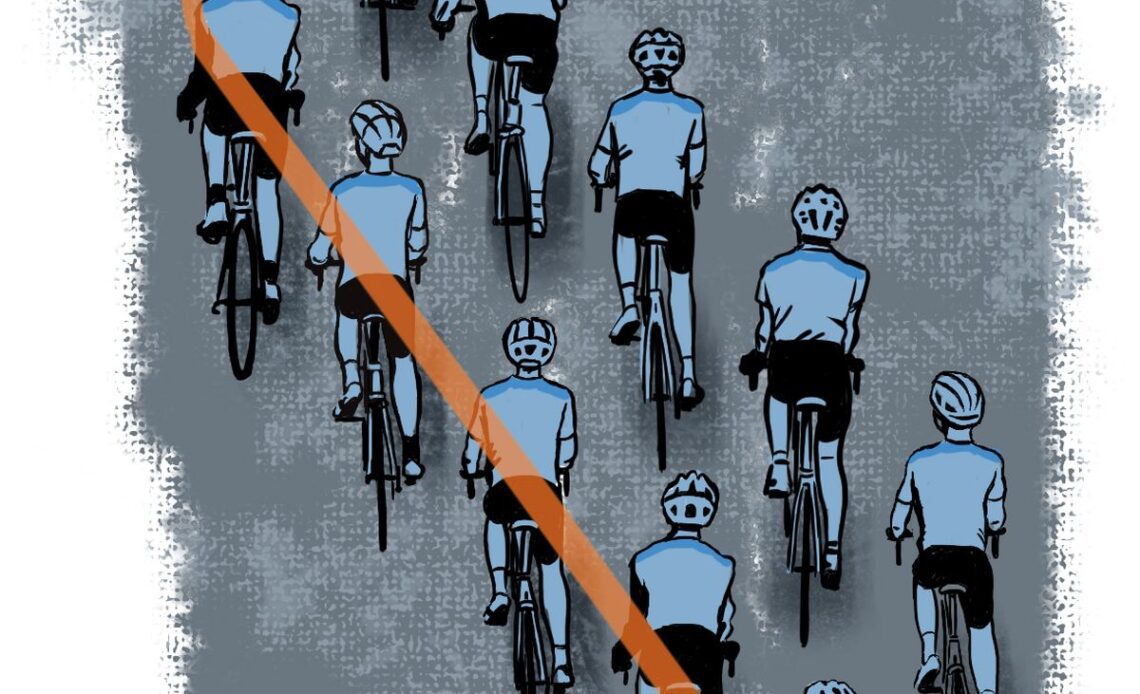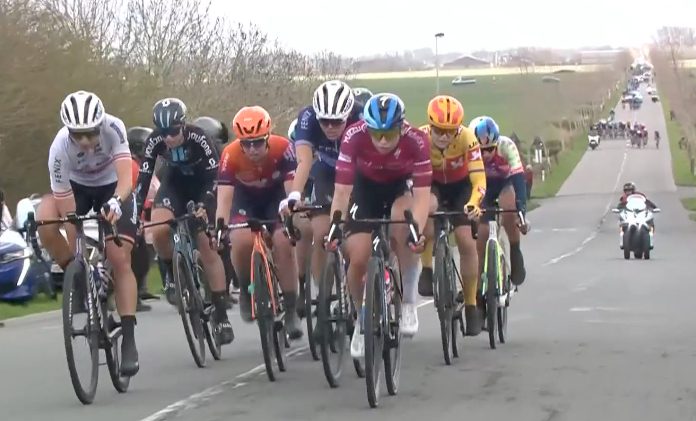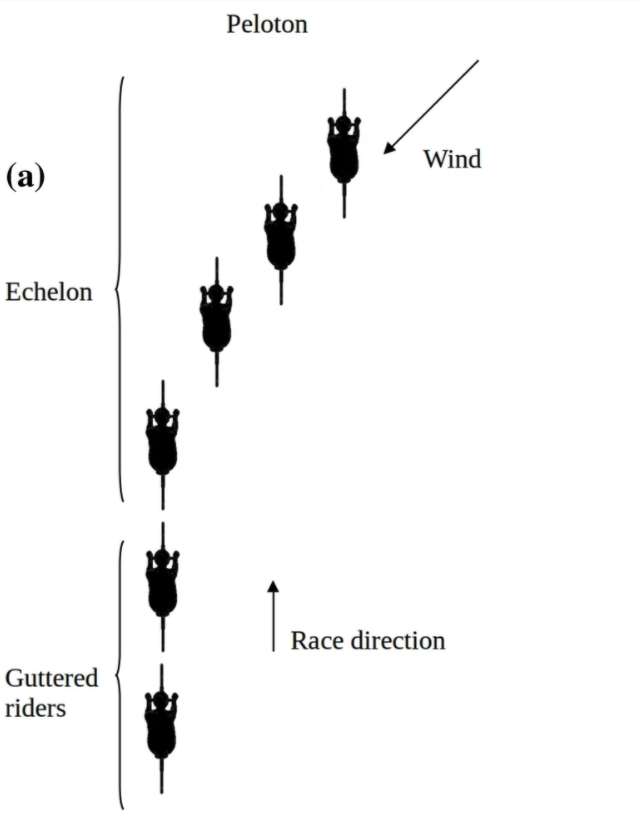When the crosswinds hit, echelons form, and if you’re not in it you risk getting dropped, unless you form a second one.
An echelon is a line of riders in one line that crosses the road diagonally. You place yourself about halfway behind the rider ahead of you. The rider at the front of the echelon will bear the most of the crosswind, and then after their turn, they drop back and the following rider will do their turn. It’s the best way to fight a breeze that’s coming from the side.
Echelon formation
Of course, the shape of the echelon will depend on where the wind is coming from. If it’s coming from the left, the first rider will be on the left and the others will trail off to the right. Then, the cyclists in the front “track” will ride upward to the left, while riders in the back “track” will then go back to the right.
Assemble it fast
Tour de France stage winner Hugo Houle is no stranger to the formation. ““An echelon happens so quickly,” Houle says. “You just have a few seconds to realize that it’s going to form. Then you have to get to the front as fast as you can because it’s really hard to get back on otherwise. Once you’re in, you want to stay in. You have to take your pull. It’s not a good thing to try to stay at the back. If there’s a team working and its riders kill the echelon, you’ll be the first one to get dropped.”
Whether it’s a race or a group ride, when crosswinds appear, echelons will form. It’s not that easy to use echelons on a group ride as riders will end up using the whole lane. And in most local races, if the road is closed or it’s a rolling enclosure, you’ll only have one lane anyway. That means that the riders at the back of the echelon may find themselves S.O.L if they run out of room to keep the diagonal formation. They will instead be forced to ride directly behind, which means little to no draft.
Making the second echelon
What to do if you find yourself at the back and out of the ZigZag club? Easy. Start a second echelon. If the wind is coming from the right, you can move across the road and hug the curb and other riders will then form behind you in the diagonal formation. Don’t panic if you’re a few bike lengths behind the first echelon, the key is to get your little group together, and quickly. The gambit, is of course, that no one joins you. But even if you have a few riders with you in a second echelon, it will be enough to keep the paceline going and survive…
Click Here to Read the Full Original Article at Canadian Cycling Magazine…



